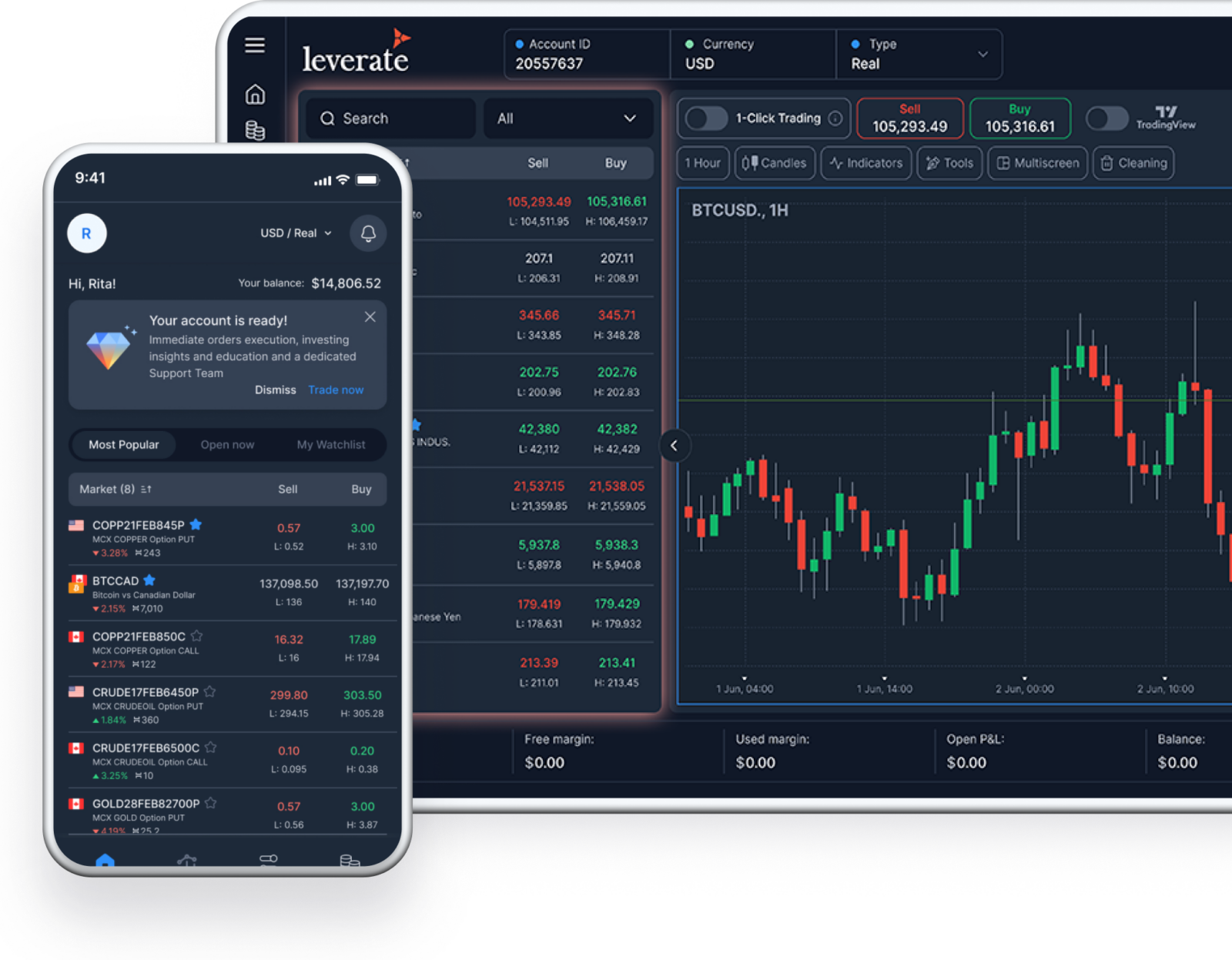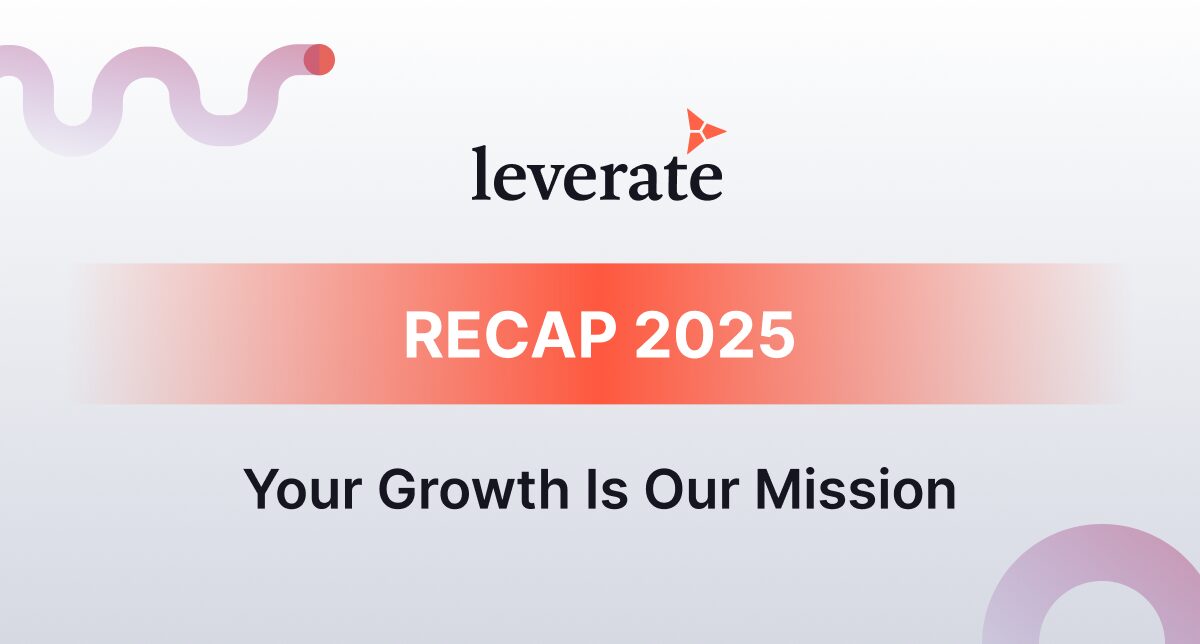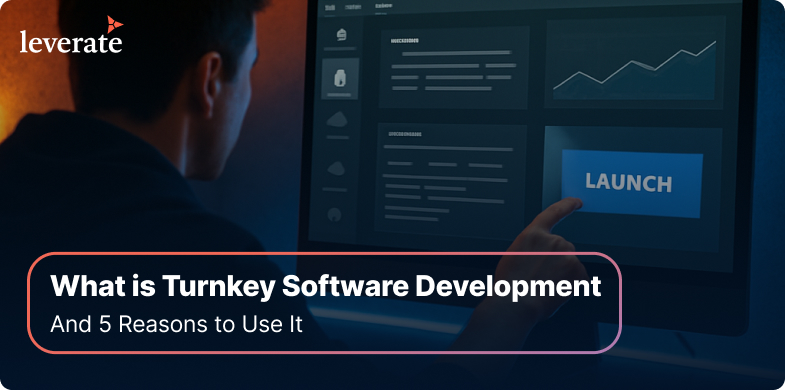
The Future of Prop Trading: Trends Driving Prop Firms Forward
Prop trading evolved faster in the last three years than in the decade before, according to a research report. Funded accounts went mainstream, evaluation programs multiplied, and data finally started reflecting how traders actually behave.
In 2025, the firms that win won’t just pick good traders; they’ll design great systems: operations, risk, teaching loops, and the Prop CRM backbone that turns one promising cohort into a repeatable, scalable program.
“Behind every great trader is a great system. In 2025, Prop CRMs aren’t about managing data, they’re about amplifying potential.” — Leverate Research Team
This is your field guide to what’s real, what’s hype, and how CRM systems for prop trading are quietly becoming the core engine behind every modern firm.
Current Landscape of Prop Firms
From “funded account” to “education + funding loop”
Early prop brands sold the dream. The smart ones now sell a path—a measurable loop: evaluation → coaching → re-test → live funding → scale-up. Each step produces data points: pass/fail causes, risk triggers, trading habits, and timing metrics. The best firms capture them all through Prop systems designed for feedback and performance optimization.
The real split isn’t size, it’s systems
Two firms might both advertise $200k accounts, but only one runs with event-driven ops, automated KYC, and real-time rule validation. That firm’s Prop CRM features cut overhead, improve trader outcomes, and create data feedback loops that compound over time.
Where the money leaks:
- Fragmented software: six dashboards, zero shared truth.
- Delayed signals: trader breaks a rule at 9:01, risk sees it at 9:45.
- Unmeasured friction: slow payouts, generic messages, no personalization.
- Coaching deserts: zero structured feedback, cookie-cutter advice.
Where the money sticks:
- One unified CRM + OMS view tied to risk and finance.
- Real-time events: deposits, rule breaches, promotions, and milestones.
- Smart nudges: “right message, right channel, right time.”
- Data-driven coaching feedback loops.
How Prop Firms Are Evolving in 2025: Adapting to New Technology and Trader Needs
1) Telemetry-first operations
2025 prop firms look like modern DevOps pipelines. Every event, trade, rule, payout, flows into CRM data layer that triggers immediate actions: coaching, rewards, or risk throttles. A trader’s journey isn’t a funnel anymore; it’s a live state machine.
- Evaluation changes trigger precision messaging.
- Equity swings auto-adjust risk profiles.
- Habit streaks unlock micro-rewards or fee discounts.
2) CRM systems for prop trading become command centers
Forget old-school CRMs. Newer ones now captures every relevant trader signal—KYC status, desk preference, payout rhythm, violations, and engagement. It drives hyper-personalized journeys at scale:
- Habit violator? Queue a coaching video and shrink position size.
- Consistent performer? Auto-send a scale-up invite and loyalty discount.
- Inactive trader? Send an in-app reminder followed by a personal coaching note on Telegram.
3) AI moves from prediction to prioritization
AI’s value now lies in focus, not fortune-telling. Prop firms use AI to rank traders by “coachable momentum,” scheduling human attention where it matters most. Fewer blind spots, more breakthroughs.
4) Risk as a product
Modern prop firms build risk into the experience, not the back office.
- Adaptive guardrails based on trader discipline.
- Personalized trade calendars that flag “no-fly” zones.
- Achievement badges for process consistency, not just profits.
5) FinOps and payouts with UX parity
Payouts are no longer backend chores; they’re loyalty tools. Transparent timelines, self-service tracking, and clear breakdowns boost trust and retention.

Industry Consolidation and New Prop Firm Models
The great unbundling… then rebundling.
We’re past the era of everyone building everything. Best-in-class providers now slot together: trading platform + payments + identity + CRM + education + risk. That modularity fosters consolidation: stronger firms absorb niche players, roll legacy brands into shared stacks, and keep the front-end distinct while back-end ops unify.
Emerging models to watch:
- Evaluation-as-a-Service (EaaS): Firms license their evaluation engine and content to partners, white-labeled.
- Hybrid broker-prop: Firms blend funded tracks with broker services, giving advanced traders tighter spreads or multi-asset portfolios.
- Creator-led desks: Small but potent groups built around a respected trader-educator; CRM and payouts built in, audience-first onboarding.
- Compliance-forward prop: Regulation is coming. Organizing now, transparent rules, audit trails, and data privacy become a moat.
Why consolidation helps traders
Fewer janky handoffs. Shorter payout queues. Simpler rulebooks. Unified support. The winner isn’t the loudest brand, it’s the least confusing.
Main Takeaways
- Data-aware firms beat marketing-first firms. The “funded account” pitch is now table stakes; operational intelligence is the differentiator.
- Your CRM is the control tower. It’s no longer optional. If your team lives in it, and it talks about risk and finance, you compound advantages monthly.
- AI that prioritizes beats AI that pontificates. Use models to rank interventions and schedule human time where it matters most.
- Consolidation favors system designers. Firms that can plug reliable modules together will buy or outlast the rest.
- Regulatory readiness is retention. Clean audits, clear rules, predictable payouts = longevity.
Leverate’s Prop Suite: A Practical Edge
If you’ve read this far, you know the finish line isn’t “launch a prop firm.” It’s to operate one well. That’s where Leverate’s prop suite earns its keep, purpose-built for teams who want to run the evaluation-to-funding loop like a product, not a spreadsheet.
Why prop firms pick Leverate:
- Event-native System
Real-time signals: deposits, phase passes/fails, rule incidents, payout requests, flow into a unifiedCRM. Build segment-of-one journeys and surface the key [Prop CRM features] you need day-to-day: smart segments, multilingual templates, lifecycle automations, and granular permissions for coaches, support, and risk. - Retention & marketing tools that act instantly
Trigger emails, in-app messages, push, and Telegram/WhatsApp connectors the moment an event fires. “Almost passed” traders get encouragement + a tailored re-test; habit-breakers get a micro-lesson and safer size; inactive funded traders get a nudge and a desk slot. - Risk woven into the experience
Adaptive rules per cohort, streak-based guardrails, desk-level configs, and exposure dashboards. Fewer surprises, more teachable moments. - Payouts with trust baked in
Self-serve payout tracking, SLA visibility, and audit-friendly logs. The outcome: fewer tickets, more confidence. - Branding control across the estate
Multilingual UI, white-label themes, PWA title/description, and social preview metadata, so your brand shows up consistently on web, mobile, and marketing channels. - Open by default
APIs for accounts, positions, finance events, evaluations, and messaging. Stream data into your BI or education stack; export raw logs anytime.
In short, Leverate gives you the operational spine that turns cohorts into programs, and programs into a durable business.
FAQs
How is technology changing the landscape of proprietary trading?
It’s moving firms from static funnels to event-driven systems. Telemetry from evaluations, trading sessions, and payouts flows into a Prop CRM, which orchestrates coaching, risk, and messaging in real time. The result: higher pass quality, cleaner rule adherence, and better lifetime value.
Will retail prop trading firms continue to grow in popularity?
Yes, provided they professionalize operations. As compliance, payouts, and education mature, more traders will choose firms that feel like systems with standards, not promotions with promises.
How will artificial intelligence impact prop trading strategies?
AI’s near-term value is prioritization and pattern spotting. It identifies who’s coachable now, which habits derail passing, and which market regimes trip specific cohorts. Use models to schedule human attention, that’s where ROI shows up first.
What markets will offer the most opportunities for prop traders?
FX and indices remain core, but growth is in multi-asset exposure: metals, energies, selective single-stock CFDs, and news-aware strategies. The firms that guide traders through regime shifts, rather than selling a single playbook, will win.
What role will regulation play in the future of prop trading?
A larger one. Expect clearer disclosures, standardized rulebooks, payout transparency, and data privacy requirements. Firms with audit trails, configurable rules, and documented payouts will adapt smoothly and be more attractive to serious traders.
Final Word
Prop trading is maturing from hype to habits at scale. The story of 2025 isn’t “bigger prizes”, it’s better systems: a CRM that understands traders, a risk layer that coaches, and operations that move at the speed of events. Suppose you want an all-in-one partner that delivers those building blocks without enterprise bloat. In that case, Leverate’s prop suite is the practical choice: modern Prop CRM, retention and marketing tools, deep branding control, and open APIs that let your team build a firm you’re proud to scale.














